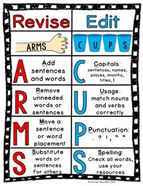Thursday 28th
|
9- 9:30
|
Reading
RWI – watch the relevant speed sounds lesson: Set 1 J: https://youtu.be/5FqSWaVuAHo
Set 2: If you have been learning set 2, you now need to move on to the next set of sounds (3): I-e - https://www.youtube.com/watch?v=sCNZwKOxsdI
Set 3: https://www.youtube.com/watch?v=2DB2hSzywMM
Then read the RWI book online https://home.oxfordowl.co.uk/reading/reading-schemes-oxford-levels/read-write-inc-phonics-guide/
Go onto ‘ebooks’ then you will need to register (this is free of charge) and then you will be able to access all the ebooks and choose the correct banded level for your child. Please note that the RWI phonics scheme is based on lots of repetition. Therefore, we usually read the same book about 3 or 4 times before moving onto a new book. For some children they may need to read it more than this to ensure they are completely fluent in reading the book (no sounding out). A general guide is: 1st read – decoding all the words – sound out as much as you need to. 2nd read – read for fluency (try to read with more fluency and expression). 3rd read – read with fluency, expression and comprehension. Try answering the comprehension questions at the back.
This website also provides lots of other information for parents about phonics. It has other resources on here too should you wish to explore!
Guided reading Complete the guided reading task at the bottom of the webpage. If the reading is taking you longer than the time allocated, then feel free to share the reading with an adult.
|
|
9:30- 9:45 |
Zoom!! Join us on zoom using the link from Mrs Lee. Please adhere to our Zoom policy. |
|
9:45 – 10:40
|
Maths Year 2 To understand how to solve problems using multiplication
Watch the tutorial to find out how to solve worded problems using what we know about multiplication. You will need to pause the tutorial to answer a question with me.
https://www.youtube.com/watch?v=aU548MzKlIY
Then, solve the problems on the webpage. You can choose between ‘year 2 maths problems’ or ‘year 2 maths problems easier’ to begin with. You need to write the multiplication and show your working. I don’t mind which method you use to solve the multiplication. please note that you do not need to print the work out. We will be spending tomorrow looking at word problems too so don’t worry if it takes you a little longer to get the hang of them. If you require a challenge, please see the challenge question attached to the webpage. The challenge has lots of elements to it so it is important that you spend time really thinking it through. At the end of the lesson evaluate against the success criteria. What went well with your work today? Was anything tricky?
Year 1 Learning objectives: To know how to multiply by counting in multiples of 2, 5 and 10.
Watch today's tutorial on sequencing multiples. https://www.youtube.com/watch?v=t0QXY-chFRA
Once you have watched the tutorial have a look at the year 1 questions. today we will be using our knowledge of the multiples of 2, 5 and 10 to answer sequencing questions. you will need to complete the sequence or find the missing numbers.
The questions have been split into normal questions, harder questions and challenge/extension questions. Please try to do as many as you can but don’t worry if you don’t finish them all.
At the end of the lesson think about whether you have met today’s success criteria. You could write at the bottom of your work how you got on and how you think you could make your work even better. |
|
10:40 – 11
|
Breaktime – have a healthy snack and a play |
|
11 – 12
|
English To understand how to structure a setting description
You may find that before you start this lesson, you want to continue from last lesson, working on gathering more sentences together. Once you are happy that you have enough sentences, watch my tutorial for how to structure your ideas into a setting description which flows. https://www.youtube.com/watch?v=86qo8zEH-A8 You will need to group together the descriptions that are about similar things. Then you will need to use the sentence stems to help your writing flow from one description to the other. Attached to the webpage are some suggested sentence openers that may come in helpful.
Once you have written out your sentences neatly using the sentence starters, read it through. Does it make sense? Is there anything that you might need to edit or revise? (see picture below)
At the end of the lesson look back at the success criteria. Did you meet all of the success criteria? What do you think you did really well? Is there anything you could have done to make your work even better?
|
|
12- 1pm
|
Lunchtime and playtime |
|
1- 1:15pm |
Wellbeing Assembly
|
|
1:15-1:30pm |
Mental Arithmetic Our new mental maths targets are linked with the work we are doing on multiplication. Please note the different activities for year 1 and year 2.
Year 1’s you need to become really confident at counting in 2’s to 24 verbally. Here are some activities to help you practise: Song - https://www.youtube.com/watch?v=GvTcpfSnOMQ
Game - http://www.ictgames.com/mobilePage/duckShoot/index.html (select duck 2, then count on from the numbered duck until you get to the duck showing the same number as the target)
Activity ideas – if you have chalk, write the numbers outside and then practise jumping on them in the order of the counting in 2’s sequence. If you don’t have chalk you could do the same thing but write the numbers of pieces of paper to then jump on.
Year 2’s you need to become really confident at recalling your 2x table verbally. Here are some activities to help you practise: Song - https://www.bbc.co.uk/teach/supermovers/ks1-maths-the-2-times-table-with-bridget-the-lioness/zrrx92p
Game - https://www.topmarks.co.uk/maths-games/hit-the-button 2 x table
https://www.topmarks.co.uk/times-tables/coconut-multiples https://www.topmarks.co.uk/maths-games/daily10 - level 2 - multiplication – 2x table
If you are feeling really confident with times tables then you can log on to ttrockstars. Please let me know if you need your login emailed to you.
|
|
1:30 – 1:45pm |
Spelling/ handwriting
These are your spellings this week. Write them down over and over again in your neatest writing. If you find the spellings hard you can try the easier ones.
You could listen to relaxing music whilst you do this, like we do at school. |
|
1:45 – 2:30 |
Foundation subject Geography To compare one area to another
Watch today's tutorial on comparing your area to the other area you have researched. https://www.youtube.com/watch?v=ybm-FJHkKBU
Look at your notes on both the areas, can you find any similarities? Any differences? Then write a paragraph to compare your area to the other area you researched, using the similarities and differences you have found.
Here is my example:
The two areas I have researched are Four Elms and London. Four Elms is a small village in Kent and London is a Large city, London is the capital city of England. Some similarities between London and Four Elms are that they both have churches. However, London has many churches and Four Elms only has St Paul’s Church. As London is a much bigger place than Four Elms, there are more places to visit in London. London has over 140 museums as well as many wonderful sites to see. Although Four Elms does not have museums and attractions like London does, there is a lovely pond in the village where you can go to see the ducks.
At the end of the lesson look back at the success criteria. Write underneath your work which success criteria you met. If you can write down what you think your target/ next step should be based on the success criteria then that would be great!
|
|
2:30 – 2:45 |
Exercise time! Go onto the ‘The body Coach TV’ YouTube channel and join in with today's PE session (these are live at 9am and can be viewed later in the day) or complete a cosmic kids yoga session on YouTube https://www.youtube.com/user/CosmicKidsYoga Or try one of CSSP active episodes
|
|
2:45 – 3 |
Storytime Join Miss Robinson (a student teacher at Seal Primary) for a story: https://www.youtube.com/watch?v=IGq7b_8QTzQ
|





